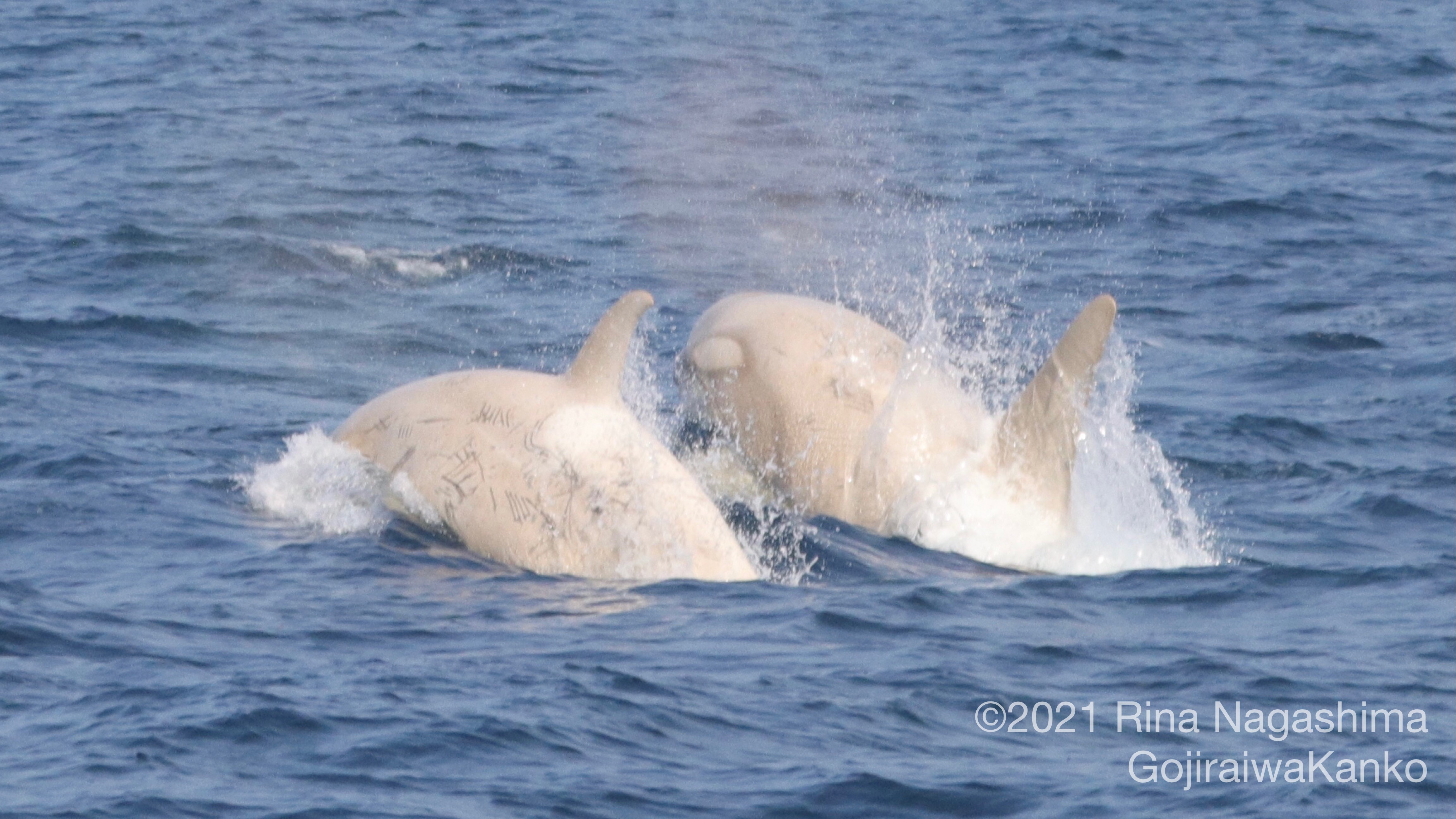In rare wildlife encounter, whale watchers spot two white killer whales off Japan
The pair are most likely true albinos.

Whale watchers in Japan were recently treated to a rare wildlife encounter when they saw, not one, but two white orcas swimming side by side.
The pair and their pod were spotted by a group on a Gojiraiwa Kanko Whale Watching boat off the coast of Rausu on the northernmost of Japan's main islands called Hokkaido on July 24, according to a Facebook post.
The white coloration of orcas, also known as killer whales, can be the result of either albinism or leucism.
Related: 13 bizarre things that washed up on beaches
"Albinism is caused by defects of melanin production and equally affects the whole skin, fur and eyes," Erich Hoyt, a research fellow at Whale and Dolphin Conservation (WDC) in the U.K., told Live Science. "Leucism results from defects in pigment cells and can be patchy."
Albinism in orcas is the result of inbreeding, but there is no clear evidence to suggest that this negatively impacts the killer whales in any other way, Hoyt said. Leucism is the result of a random genetic mutation and also doesn't seem to impact the orcas' health, according to WDC.
"The homogenous creamy yellowish coloration in these killer whales would indicate albinism," Hoyt said. However, the only way to tell for certain would be to see their eyes (which are not visible in the images); pink eyes would mean the killer whales are albinos, he added.
Sign up for the Live Science daily newsletter now
Get the world’s most fascinating discoveries delivered straight to your inbox.
As a result of being white, both orcas have very visible scratch-like markings, known as rake marks, across their bodies. These marks are caused by the teeth of other orcas, most likely as a form of playing rather than actual fighting. "The black orcas have marks too, but you can't see them as well," Hoyt said. Even so, the white orcas in the most recent photos have an "exceptionally large number of markings," he added.

It is unclear exactly how many white orcas exist across the globe, but certain populations are known to have more white individuals than others.
"Roughly 1 in 1,000 orcas in the western North Pacific [are white]," Hoyt said. "That is probably the highest ratio anywhere in the world." In 2016, Hoyt and others published a study in the journal Aquatic Mammals highlighting the unusual abundance of white orcas in the region.
That North Pacific population is found primarily in Russian waters, but some are also transient — an ecotype or subspecies of killer whales that have a wide geographical range — meaning they could have made the trip to northern Japan.
"These Hokkaido orcas with two white individuals may well be a group coming from adjacent Russian waters," Hoyt said, "but we don't know."
Editor's Note: This article was updated at 4:10 a.m. ET on July 29, 2021 to include a missing paragraph including information on Erich Hoyt and the WDC.
Originally published on Live Science.

Harry is a U.K.-based senior staff writer at Live Science. He studied marine biology at the University of Exeter before training to become a journalist. He covers a wide range of topics including space exploration, planetary science, space weather, climate change, animal behavior and paleontology. His recent work on the solar maximum won "best space submission" at the 2024 Aerospace Media Awards and was shortlisted in the "top scoop" category at the NCTJ Awards for Excellence in 2023. He also writes Live Science's weekly Earth from space series.









